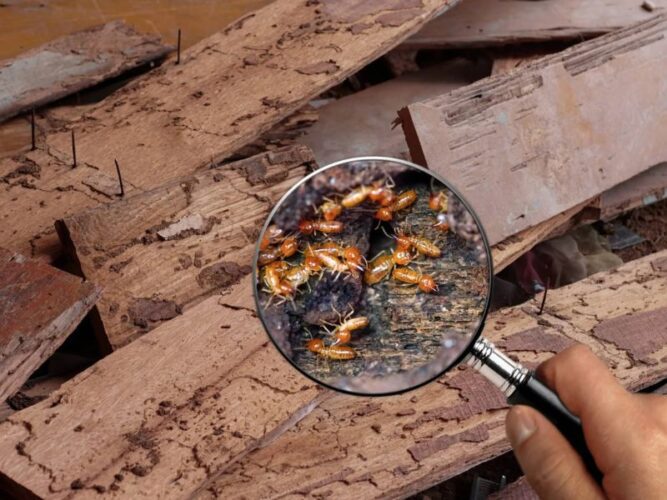Termites pose a significant threat to the structural integrity of buildings, making regular termite inspections crucial for homeowners and property owners. As we enter the year 2023, it is important to stay updated on the latest techniques and technologies for conducting a thorough termite inspection.
In this article, we will guide you through the process, providing valuable insights and expert tips to help you detect and prevent termite infestations.
Understanding Termite Behavior
It is crucial to have a foundational knowledge of termite behavior prior to beginning the inspection procedure.
Termites form colonies, which include different castes of members (workers, soldiers, and reproductives). They cause significant harm if allowed to continue feeding on cellulose-based materials like wood.
Preparing for the Inspection
Gather the necessary tools: Equip yourself with essential tools for the inspection, including a flashlight, moisture meter, probe, protective clothing, and a notebook to record findings.
Familiarize yourself with common termite signs: Educate yourself about the signs of termite activity, such as mud tubes, damaged wood, discarded wings, and termite droppings.
Exterior Inspection
Start with the foundation: Inspect the foundation of the building, paying close attention to areas where soil meets the structure. Look for mud tubes, which termites construct to travel from the soil to the wooden components of the building.
Check exterior walls: Examine the exterior walls for signs of termite infestation, such as damaged wood, blistering paint, or hollow sounds when tapping on the surface.
Inspect wooden structures: Focus on wooden structures, such as decks, fences, and pergolas, as they are vulnerable to termite attacks. Look for signs of damage, including wood that sounds hollow when tapped or wood that appears to be layered or swollen.
Interior Inspection
Inspect the basement and crawl spaces: Start by examining the basement and crawl spaces, as termites are more likely to infest these areas. Look for mud tubes, damaged wood, or signs of moisture, as termites thrive in damp environments.
Check wooden components: Thoroughly inspect wooden components inside the building, such as window sills, door frames, and skirting boards. Pay attention to any visible signs of termite damage, including tunnels, galleries, or frass (termite droppings).
Probe suspected areas: Use a probe to carefully check areas where termite activity is suspected. Gently tap wooden surfaces and listen for a hollow sound, indicating potential termite infestation.
Seeking Professional Assistance
Consider hiring a licensed pest control professional: If you lack the expertise or confidence in conducting a thorough termite inspection, it is advisable to seek professional assistance. Licensed pest control experts have the knowledge and tools to identify and address termite infestations effectively.
Schedule regular inspections: Even if no signs of termite activity are found during your inspection, it is important to schedule regular inspections by professionals. Early detection is key to preventing extensive termite damage.
Termite Prevention Tips
Minimize wood-to-soil contact: Termites thrive on the connection between wood and soil, so it is important to minimize direct contact between them. Ensure proper ventilation and use concrete or metal supports where possible.
Maintain proper drainage: Ensure proper drainage around the building, directing water away from the foundation. Excess moisture can attract termites, so it is essential to address any leakages promptly.
Store firewood away from the building: If you have firewood, store it at least 20 feet away from your home or other wooden structures. Regularly inspect the firewood for signs of termite activity before bringing it indoors.
Conclusion
A termite inspection in 2023 requires a proactive approach, utilizing a combination of traditional inspection techniques and new technologies. By following the steps outlined in this comprehensive guide, homeowners and property owners can effectively detect termite infestations and take timely preventive measures.
Remember, early detection and regular inspections are the keys to protecting your property from the damaging effects of termites.

